Microsoft has arguably done more to shape the evolution of the PC than any other company.
This week, Microsoft celebrates its 50th anniversary on April 4, 2025. Fifty years is a long time for anyone, let alone a company which has driven itself to move at the pace of the computer, than the Internet, and now AI. That’s decades of decisions, of launches (and lawsuits!) and apps both good and bad. Most absolutely changed how you live and work.
But which ones? Here are 25 key moments in the long, storied history of Microsoft! For each, you’ll find a bit of background, a quirky fact or two, and what it has all meant for Microsoft and for you. Happy birthday, Microsoft!
1975: Gates and Allen show off their BASIC interpreter
In Albuquerque, New Mexico, Bill Gates, and Paul Allen meet at Lakeside School, forging a partnership that would literally change history. The Lakeside Mothers Club bought a teletype that can connect with a General Electric timeshare computer, and Gates hones his BASIC skills while using it. He even writes a computerized class schedule for Lakeside, scheduling a “disproportionate number of interesting girls” alongside him in class. (Ahem.) At night, he reads computer manuals.
In 1975, the MITS Altair 8000 debuted, and Gates and Allen decide to write a BASIC interpreter for it after reading about it in Popular Electronics. In March 1975, they convince MITS that the interpreter works, and that MITS should distribute it as Altair BASIC.
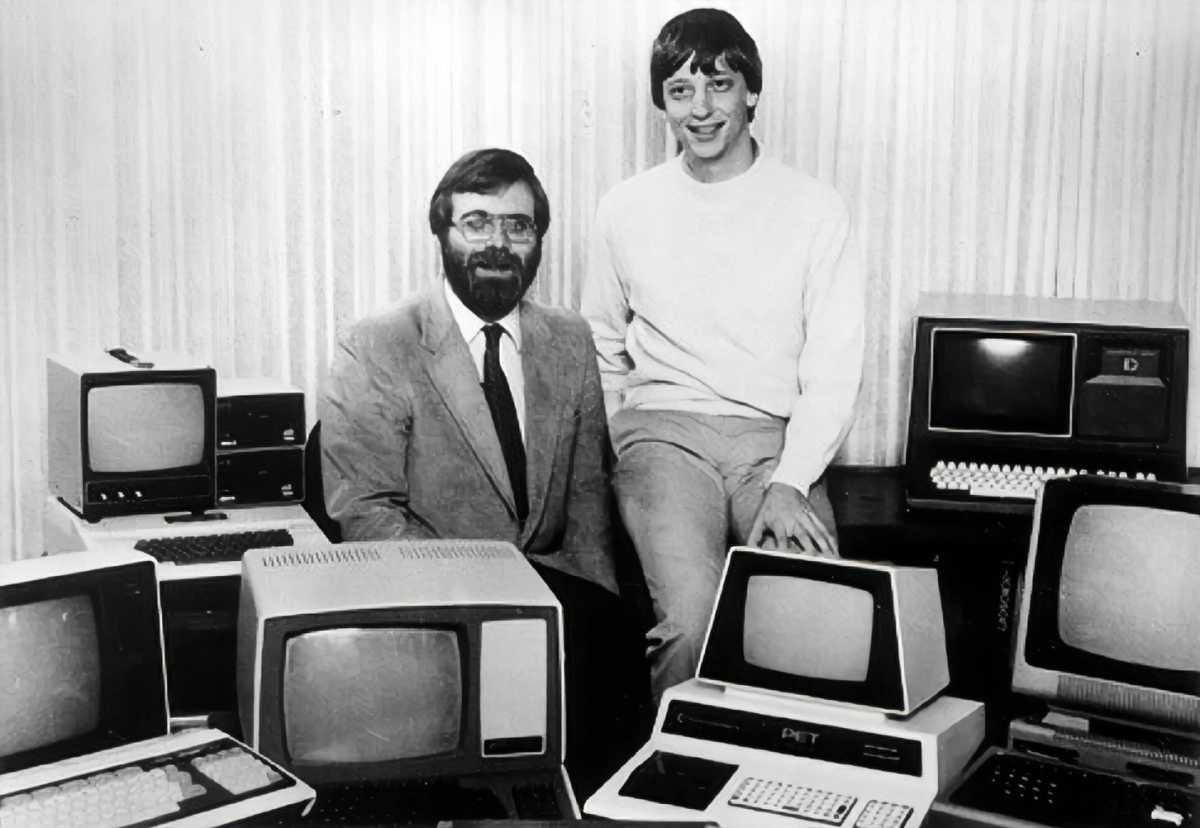
Microsoft
Gates and Allen established Microsoft on April 4, 1975, the same day Altair BASIC was released. “Micro-Soft” was registered on Nov. 26, 1976, as a pastiche of “microcomputer” and “software.”
1981: Microsoft releases MS-DOS
IBM developed the personal computer in 1980; Microsoft adapted the operating system to run it. IBM needed an operating system to power the IBM PC, and couldn’t finalize negotiations with Digital Research and CP/M — although why the two companies couldn’t strike a deal is disputed, ranging from licensing issues to whether or not DRI founder Gary Kildall was even available. IBM approached Microsoft and struck an agreement: Microsoft would supply its OS.
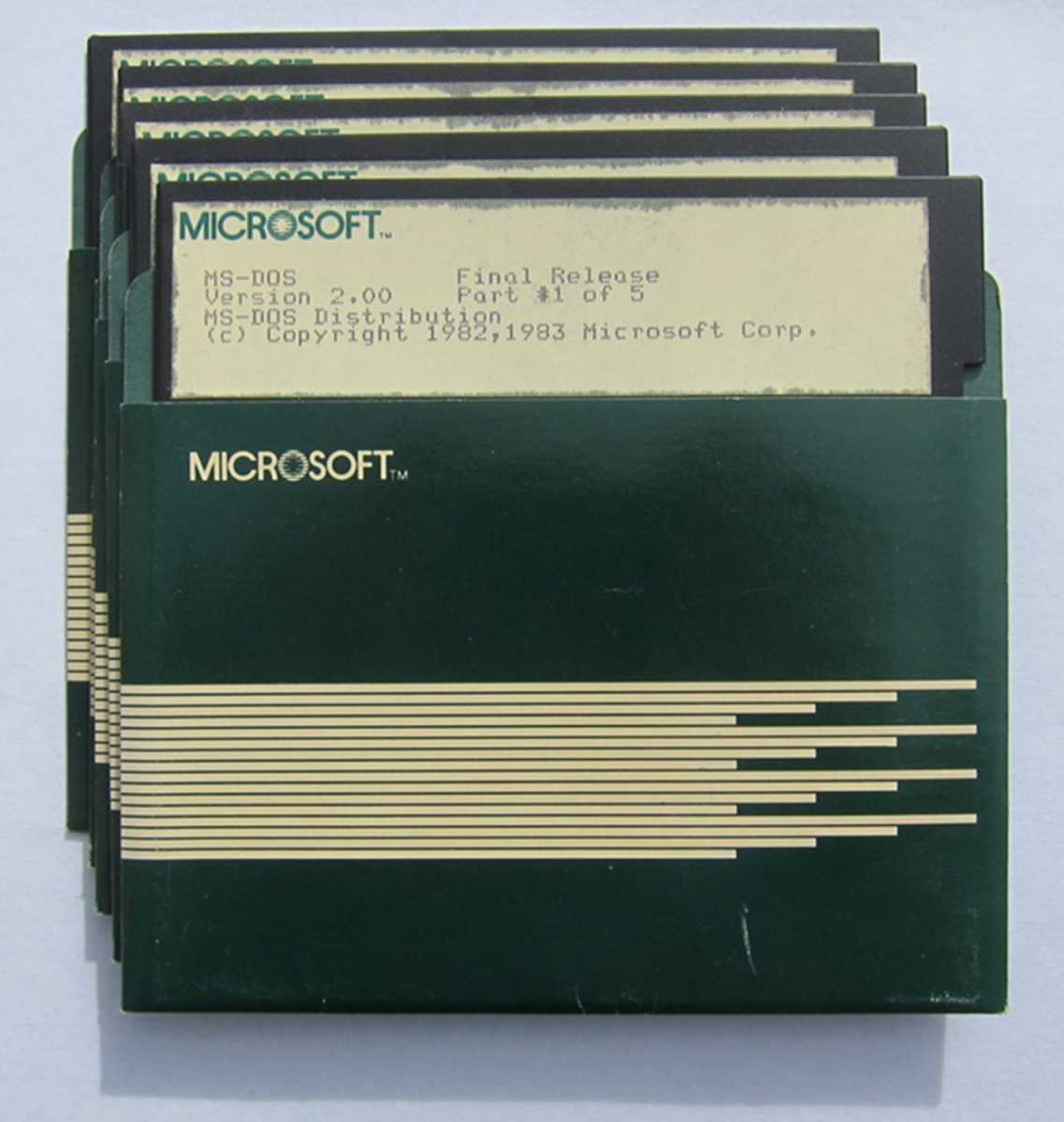
But Microsoft didn’t actually have an operating system, and decided to license Tim Paterson’s Quick and Dirty Operating System (QDOS) instead as PC-DOS. According to Allen’s memoir, QDOS was licensed to Microsoft for $10,000 plus $15,000 for every corporate license. Microsoft, in turn, asked for and received $430,000 for the deal, including $75,000 for various adaptions. A critical clause: Microsoft wanted the ability to resell its QDOS OS, and MS-DOS was born.
On Aug. 12, 1981, IBM announced the IBM PC. IBM actually sold the PC with a choice of either CP/M or Microsoft’s PC-DOS, but charged $240 for CP/M and $40 for PC-DOS. Guess which consumers preferred?
(In 2014, Microsoft published the MS-DOS source code to the Web…then apparently released a second version in a proprietary format, making no one happy.)
1982: Microsoft unveils…a game?
In Nov. 1982, Microsoft launched Flight Simulator 1.0, essentially carving out Microsoft as a videogame company just as much as a firm that would shape computing. Flight Simulator was not originally designed by Microsoft; instead, it was coded by Sublogic and licensed to Microsoft as a 16-bit product in 1982, alongside similar versions for the Apple II and Commodore TRS-80.
Since then, Microsoft has further iterated upon Flight Simulator, with its most recent version, MSFS 2024, released last year. The improved simulation features essentially a fully rendered Earth, complete with air and ship traffic, and graphics that go down to individually-rendered animals. Quite a ways from the demo above, right?
1983: Microsoft jumps into the hardware market, too
On May 2, 1983, Microsoft unveiled the Microsoft Mouse, further diversifying the company’s offerings. Though the mouse was made by Alps, Microsoft marketed it as a necessary peripheral for IBM-compatible systems that used MS-DOS.
The Microsoft Mouse kicked off decades of Microsoft-branded computer peripherals, as the company attempted to enhance the appeal of the PC with ergonomic, attractive PC peripherals from mice to keyboards to joysticks. In January 2024, Microsoft pulled out of the PC mouse and keyboard market, ceding manufacturing to Incase. That hasn’t stopped Incase from launching new Microsoft PC peripherals, however; the “designed by Microsoft” Compact Ergonomic Keyboard debuts this year for $119.99.
1983: Microsoft launches “Multi-Tool Word”
Charles Simonyi developed the world’s first word processor, Bravo, for Xerox’s iconic Palo Alto Research Center, or PARC. In 1981, Gates hired him. On the first day of his tenure, Simonyi set out to develop a word processor, spreadsheet, and database application, all designed originally to run on MS-DOS — and later, into Windows using the Microsoft Mouse.
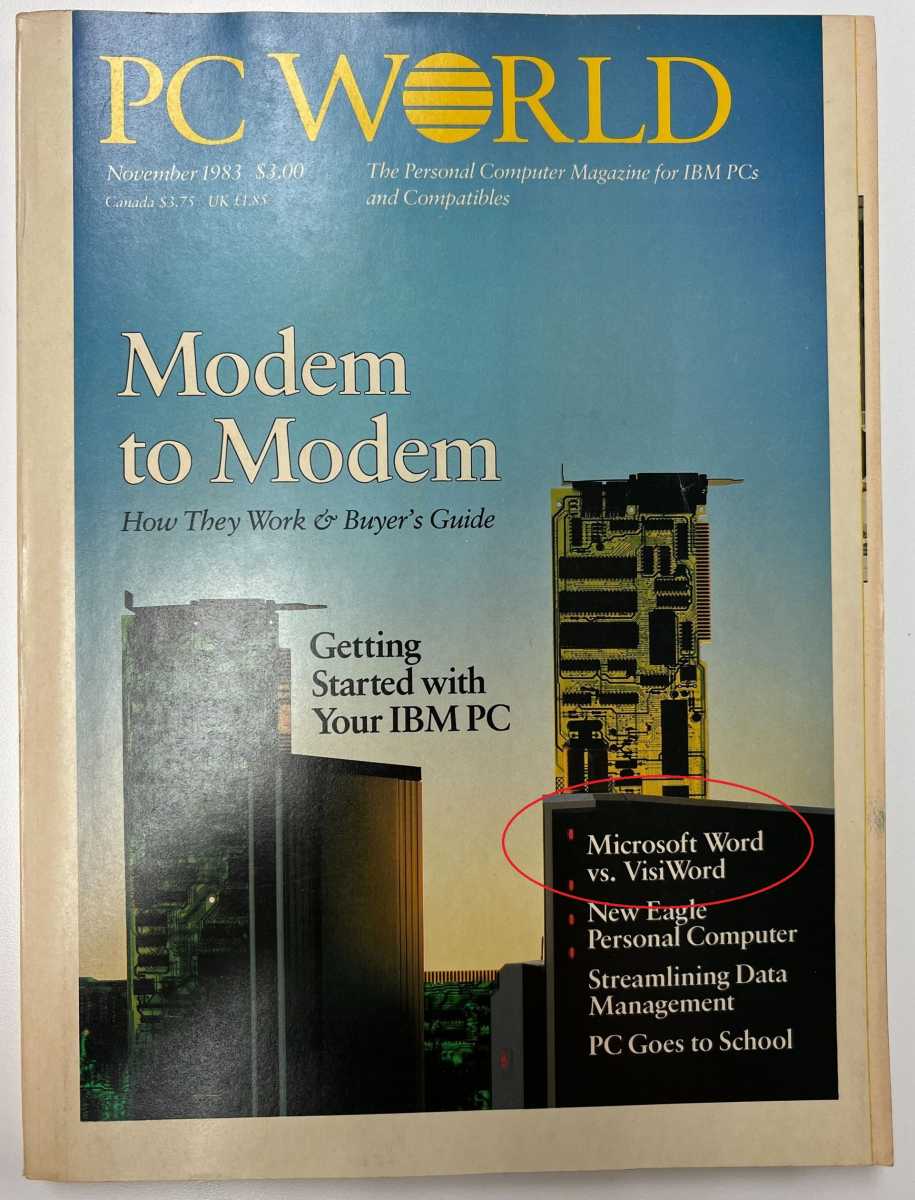
Willis Lai / Foundry
“Multi-Tool” turned out to be too clunky of a name…and Microsoft Word was born. Fun fact: a free demo of Word was bundled with the Nov. 1983 issue of PCWorld! (For more, read our feature: “Microsoft Word Turns 25.”
1985: Microsoft Windows launches, ushering in the graphical user interface
Windows didn’t just happen overnight. While MS-DOS was of course successful, companies like Digital Research (GEM), Tandy (DeskMate) and others were adding graphical user interface shells to MS-DOS, moving beyond mere text on a screen. And then there was the 1983 Apple Lisa, built entirely on a GUI. Microsoft had to follow suit. But for two years after Microsoft announced what it called “Interface Manager” on Nov. 10, 1983, development stalled — it took more than two years before Windows 1.0 debuted on Nov. 20, 1985 for a price of $99. (That’s a fixed price, not a subscription.)
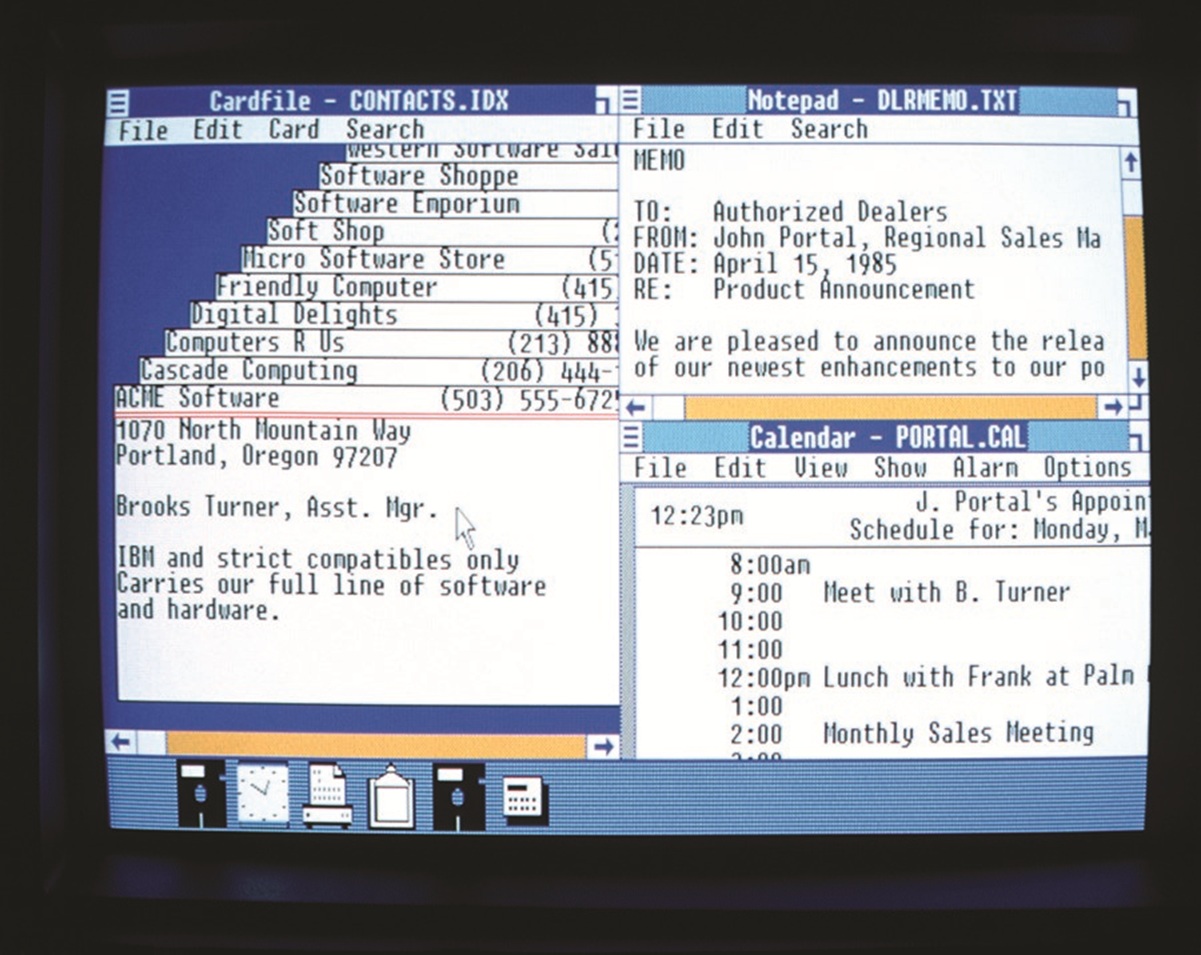
Microsoft
Sure, Windows launched Microsoft into the modern era, but we shouldn’t forget that it also incorporated apps like Calendar, Notepad, and Paint. It’s taken literal decades for those to be freshened up, but today we’re seeing generative AI make its way inside Paint and Notepad, among others.
1986: Microsoft goes public
On February 26, 1986, Microsoft formally opened its doors in its new headquarters in Redmond, Washington, close to where Gates grew up in in Seattle. On March 13, 1986, the company went public at $21 per share.
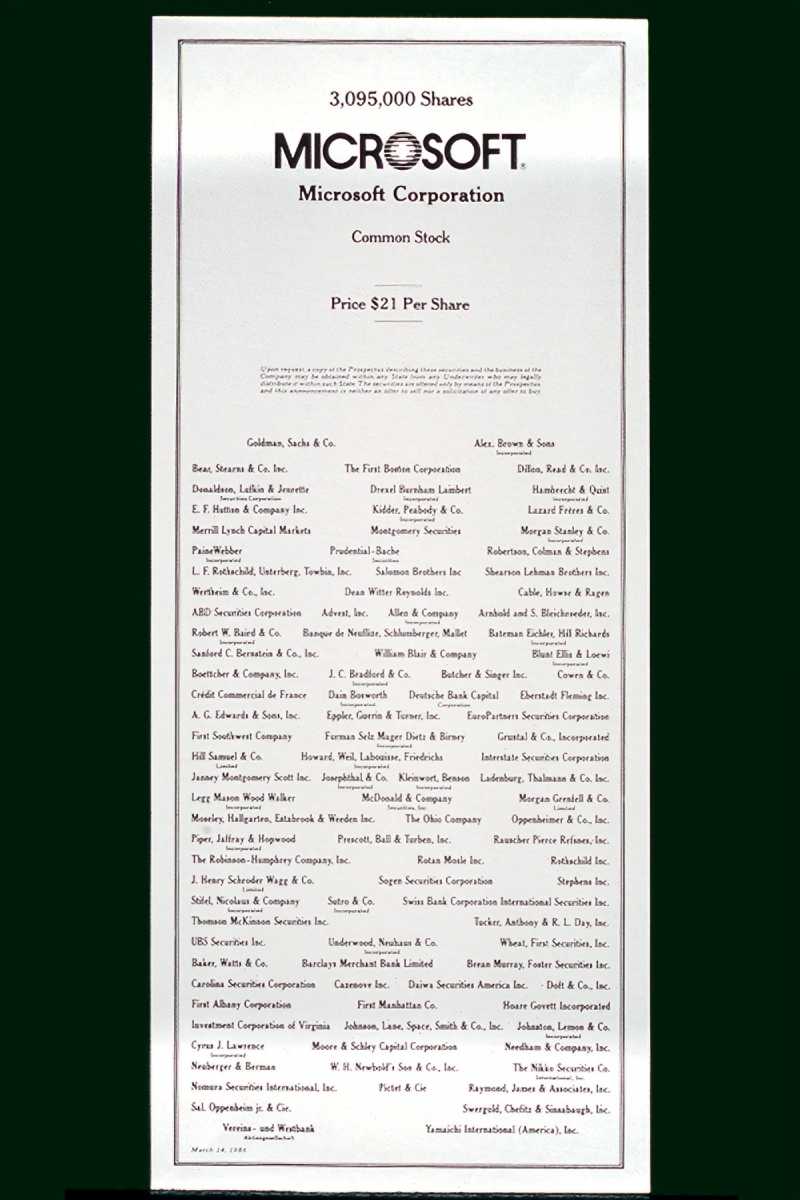
Microsoft
If you had purchased just one share at Microsoft’s IPO, it would be worth about $112,086 today, according to Microsoft Copilot. Tack on about $955 for annual dividends. But if you’d reinvested them, the total would be as much as $119,300 to $127,086 from one share alone. (If you’d done the same for Apple, your return would be about $72,800.)
1988: Microsoft ships Microsoft Office, shipping its trinity of productivity apps
While Microsoft may have debuted Multi-Tool Word in 1983, it wasn’t until the Comdex trade show on August 1, 1988, that Microsoft announced Microsoft Office. (Like Windows, Office shipped two years later on Nov. 1, 1990.) The suite included Word 1.1, but the second version of Microsoft Excel. PowerPoint wasn’t originated at Microsoft, either; Microsoft bought “Presenter” from Forethought Inc. and shipped version 2.0 inside Office. As Microsoft itself reported, the company was competing with itself: Microsoft launched Microsoft Write for the Atari at the same trade show.
Since then, Microsoft Office has become the de facto productivity suite, though free alternatives to Office exist.
1990: Microsoft releases Windows 3.0, the first major update to Windows
Microsoft released Windows 2.0 in 1987, but Windows 3.0 and 3.1 (released Apri
Connectez-vous pour ajouter un commentaire
Autres messages de ce groupe


Damn! Damn, damn, damn. Just a few weeks ago, I lost my resolve and f

The unpredictable chaos of the Trump administration’s tariff whims pu



If you want a proper high-performance gaming laptop, then you can’t o

Whenever Tablo issues a big software update for its latest over-the-a
